Drug war in Ciudad Juarez
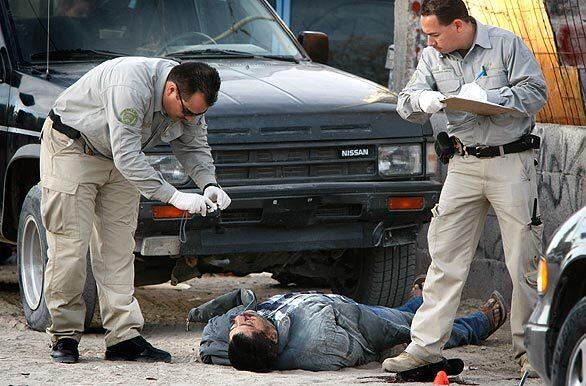
Investigators inspect the body of one of two men killed in Tierra Nueva, a graffiti-stained neighborhood of dirt streets and concrete shacks in south Ciudad Juarez. (Don Bartletti / Los Angeles Times)
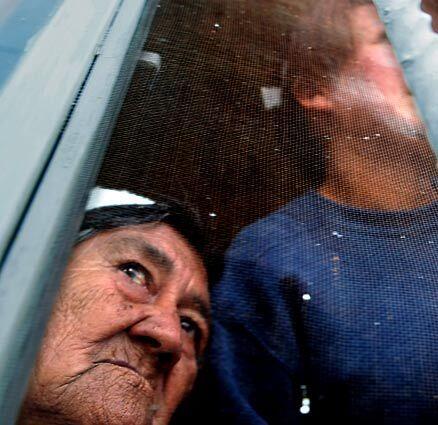
Women peer through a screened window to see two dead men slumped on the street in front of their small grocery store. Witnesses said they heard three gunshots, but no one reported seeing the shooter. “They didn’t catch anyone,” a smoky-voiced woman said. “They always lose them.” (Don Bartletti / Los Angeles Times)
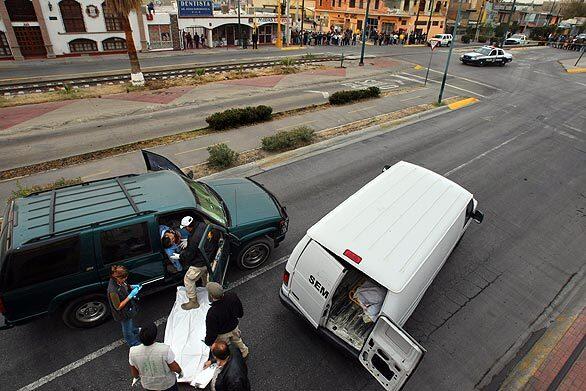
A coroners worker in Ciudad Juarez removes the body of a 12-year-old girl from the vehicle in which she and her father were killed in a hail of bullets. (Don Bartletti / Los Angeles Times)
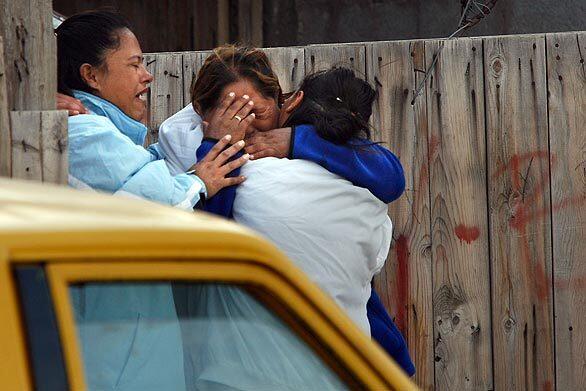
The wife of one of the two Tierra Nueva victims is consoled by neighbors at the crime scene. The other victim was involved in illegal things, a neighborhood resident said. (Don Bartletti / Los Angeles Times)
Advertisement
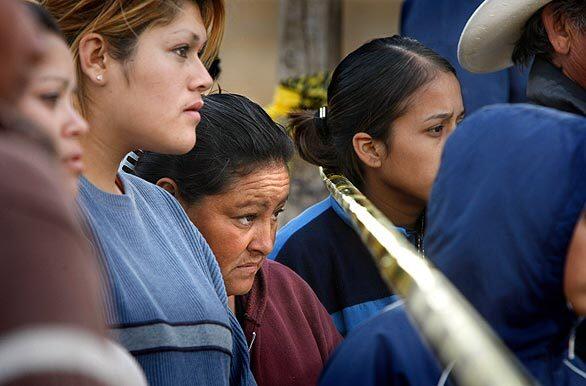
A crowd gathers near the Tierra Nueva crime scene. Ciudad Juarez has recorded more than 1,350 killings this year. (Don Bartletti / Los Angeles Times)
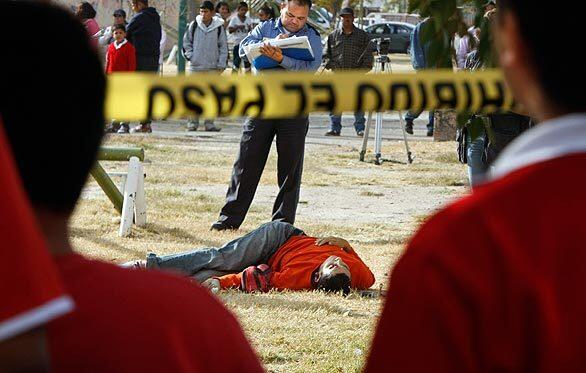
Schoolboys, in foreground, look at the body of a shooting victim in a playground in Satelite, a working-class section of east Ciudad Juarez. The area is notorious for drug dealing. (Don Bartletti / Los Angeles Times)
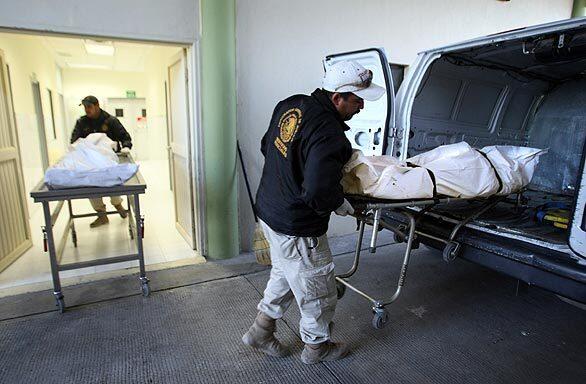
Coroners workers Raymundo Grado, left, and Enrique Lopez wheel the bodies of the shooting victims from the Tierra Nueva neighborhood into the city morgue. (Don Bartletti / Los Angeles Times)
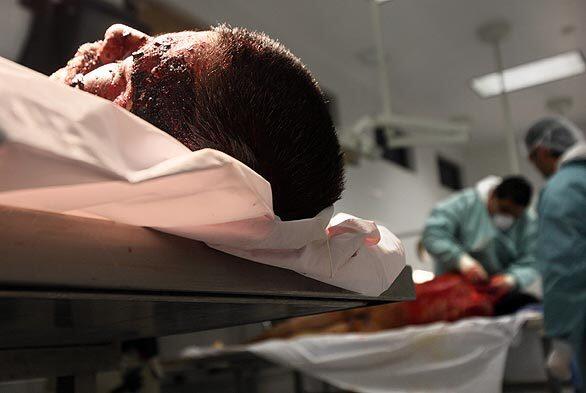
One of the Tierra Nueva victims, left. In background, doctors remove bullet fragments from a body that was brought in earlier. (Don Bartletti / Los Angeles Times)
Advertisement
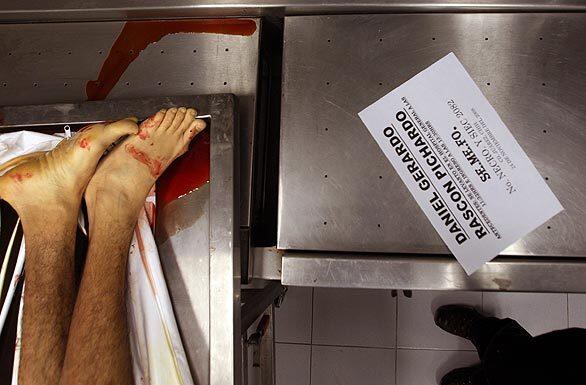
The foot end of the autopsy table is lower than the head end, allowing blood to trickle into the steel sink. (Don Bartletti / Los Angeles Times)
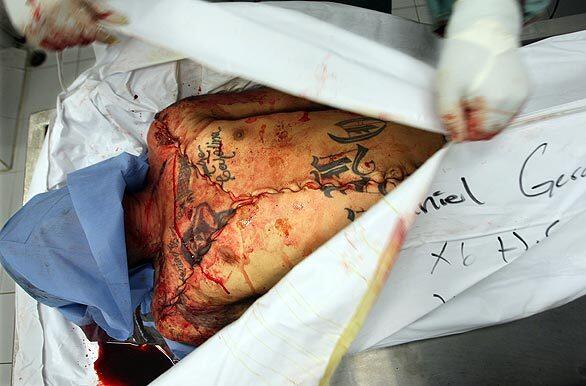
Tattoos on a shooting victim, including eagles and a snake, suggest he belonged to the Aztecas, a street gang that reportedly works as muscle for the Juarez drug cartel. (Don Bartletti / Los Angeles Times)
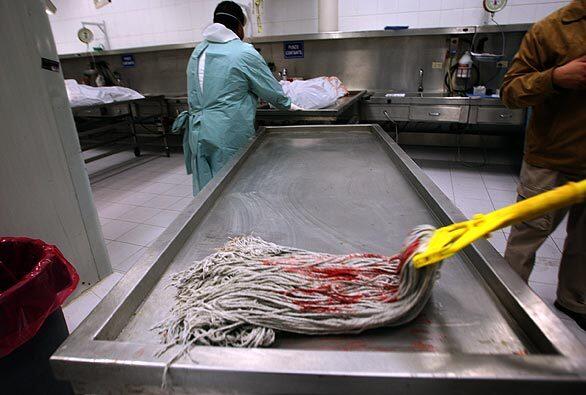
A technician cleans up after an autopsy. The coroner’s office is open 24/7 and employs more than 100 doctors, technicians and investigative specialists, who cover Ciudad Juarez and northern Chihuahua state. (Don Bartletti / Los Angeles Times)
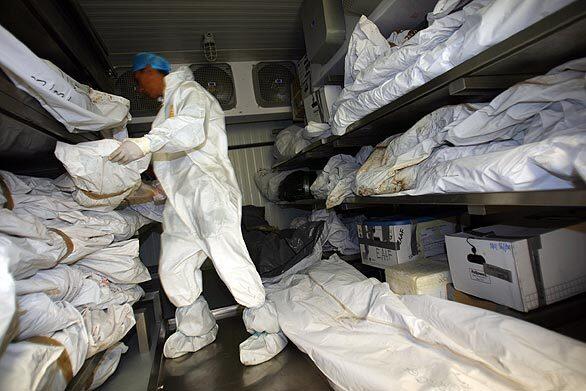
The city morgue has three walk-in refrigerators packed with bodies. Heads are kept in cardboard or foam boxes. (Don Bartletti / Los Angeles Times)
Advertisement
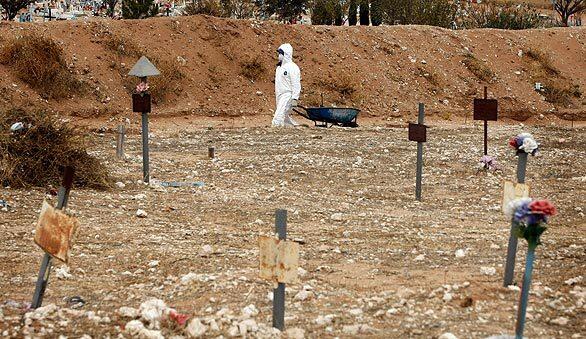
At the city cemetery, called San Rafael, bodies of unidentified or unclaimed victims are buried separately in the communal grave. This year more than 200 unidentified bodies have been sent there. (Don Bartletti / Los Angeles Times)
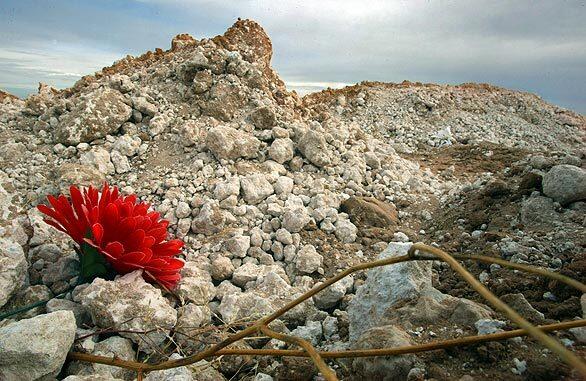
Mounds of desert soil are the only evidence of where unidentified victims of the drug war are buried. A plastic flower blown from a neighboring section rests near the unmarked grave. (Don Bartletti / Los Angeles Times)







